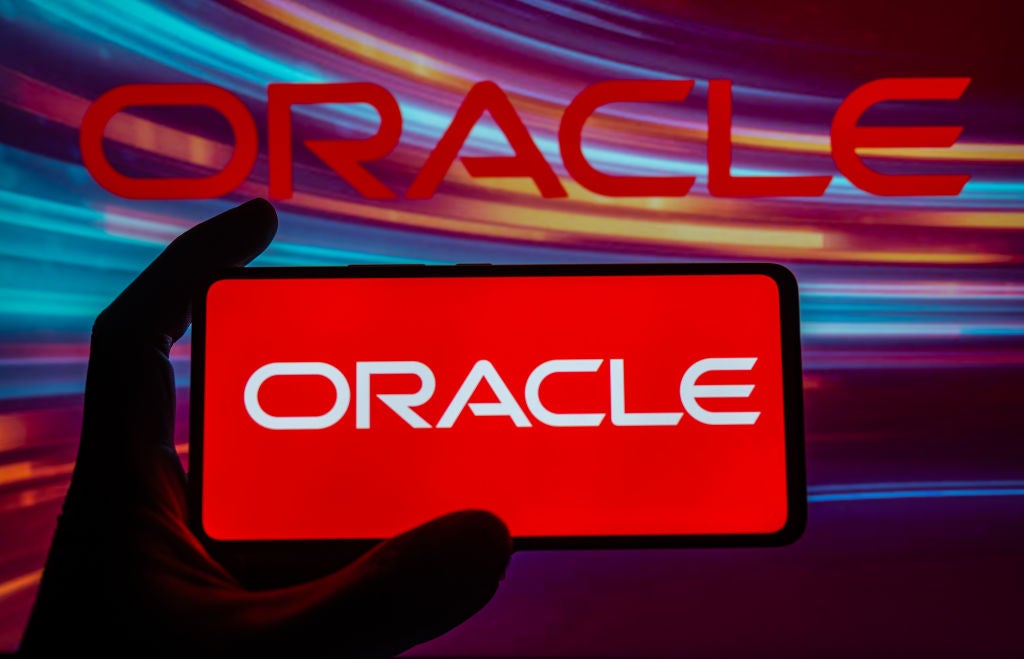
Verdict lists the top five terms tweeted on cloud computing in February 2021, based on data from GlobalData’s Influencer Platform. The top tweeted terms are the trending industry discussions happening on Twitter by key individuals (influencers) as tracked by the platform.
1. Artificial Intelligence – 675 mentions
The top strategic technology trends for 2021, and the role of AI-powered cloud-based solutions in supporting Covid-19 vaccination drive and businesses were the most popular topics discussed on Twitter in February 2021. Antonio Grasso, the founder and CEO of Digital Business Innovation Srl, an information technology company, tweeted an article on nine interdependent strategic technology trends that will support businesses coherently to overcome the existing socioeconomic challenges of the world.
AI engineering is one such technology listed in the article, which will facilitate execution, scalability, interpretability and trust-worthiness of AI models with the full AI investments value. The distributed cloud that allows organisations to benefit from the public cloud without managing their own expensive and complex private cloud is another technology trend. Privacy-enhancing computation, hyper-automation, cybersecurity mesh, Internet of Behaviour (IoB), total experience strategy, were some of the technology trends discussed in the article.
Ronald Van Loon, CEO of the Intelligent World, an analyst and influencer network, discussed the term to note how AI can remove the IT challenges being faced by healthcare organisations during the Covid-19 vaccination programme. The management of the patient and consumer data through the ordering, shipping and tracking of medicines and vaccines is very complicated due to the lack of coordination among the local, state, and federal government entities.
The potential threat to data security and regulatory compliances are also a major cause of concern. Therefore, various healthcare providers in the US are utilising data analytics and AI to determine who should receive the initial Covid-19 vaccines, according to the specified protocols. Cloud-based programming optimisation solutions are also being utilised to assist in improving the rate of vaccination, simulating the demand and supply disparities and facilitating decision-making on locations for vaccine administration.
AI was also discussed by Craig Milroy, a data capitalist, in relation to the low-code or no-code platforms for rapid design and launch of applications. The platforms are built upon extended cloud-based platform-as-a-service environments to provide rapid and comprehensive solutions to business problems. Salesforce, an all-business platform, OutSystems, an AI-enhanced development, and Appian Low-code Automation Platform are a few leading vendors with low- and no-code offerings.
How well do you really know your competitors?
Access the most comprehensive Company Profiles on the market, powered by GlobalData. Save hours of research. Gain competitive edge.

Thank you!
Your download email will arrive shortly
Not ready to buy yet? Download a free sample
We are confident about the unique quality of our Company Profiles. However, we want you to make the most beneficial decision for your business, so we offer a free sample that you can download by submitting the below form
By GlobalDataTop Strategic Technology Trends by @Gartner_inc.
Distributed cloud, AI engineering, cybersecurity mesh, and composable business drive some of the top trends for 2021.
Link > https://t.co/NE0oltXgmw via @antgrasso #Cloud #AI #CyberSecurity pic.twitter.com/Ldqqo9NG13
— Antonio Grasso (@antgrasso) February 20, 2021
2. Malware – 609 mentions
A new technique of cyberattack called dependency confusion and the ways of destroying the cybercrime economy were most popularly discussed in February 2021. Ratan Jyoti, the chief information security officer at the Ujjivan Small Finance Bank, shared an article published by Microsoft about a new type of cyberattack technique called dependency confusion that can compromise the process of application development in a corporate setting.
A team of security researchers demonstrated that the attackers discover the names of private libraries used in a company’s app-building process and upload public libraries containing malicious code. During the app development process, developers confuse their internal library with the malicious library hosted on the public repository and their package manager prioritises the latter. Microsoft has recommended referring to one private feed, protecting the private packages using controlled scopes on public package repositories, and utilising client-side verification features to prevent such cyberattacks.
Malware was also discussed by Marc Wilczek, COO at the IT security provider Link11, through an article on the ways to destroy the cybercrime economy. The distributed denial-of-service (DDoS) attacks have become a more common and effective method for online extortion. The companies need to protect their IT infrastructure with cloud-based services, which can ward off large-scale attacks by spotting anomalies using AI and machine learning before the attack.
Microsoft warns enterprises of new 'dependency confusion' attack technique https://t.co/ONqdW1eH0P#CyberSecurity #digital #Hackers #infosec @reach2ratan #malware #cloud #cloudsecurity #dataprotection #Privacy #infosec #informationsecurity #cloudcomputing pic.twitter.com/S60i1dRZZL
— Ratan Jyoti (@reach2ratan) February 13, 2021
3. Big Data – 483 mentions
Data security management amid rising Big Data and connected devices, Amazon Web Services (AWS) partnership with space companies for streamlining data and the availability of Databricks data platform across all major clouds were the most discussed topics in February. Robin Kiera, the founder of Digitalscouting, a fintech services company, shared an article on how the growth of Big Data and connected devices poses a security risk to collected data.
Cloud-based services, however, can protect this data without the need for organisations to invest in IT infrastructure. The organisations can set extensive cloud-based control security solutions, hosted by a cloud provider to secure the data collected from multiple Internet of Things (IoT)-enabled devices for analysis, the article noted.
Kirk Borne, a principal data scientist at Booz Allen Hamilton, a technology and management consulting services provider, discussed the term with respect to the partnership between Amazon’s AWS and space companies to streamline the collection, distribution and analysis of data for businesses. The companies such as Capella Space, a satellites operating company, are utilising AWS’ cloud computing services to reduce the time required to provide data to its customers and to serve them better.
Big Data was also discussed by Andrew Brust, the founder of Blue Badge Insights, a computer software company, in relation to Databricks, the Apache® Spark™-based cloud data platform, which is now available across three major cloud platforms including AWS, Microsoft Azure and Google Cloud. Databricks can intake a big set of data from various sources and execute a scalable transformation of data. It makes Big Data simple by preparing data, performing analytics, and building data products.
As connected devices and #BigData continue to grow, How do we manage Data Safely and Securely? https://t.co/qqZIzPqBW6@DigitalMasterCh @WbconsHd @SmartBizInsight @TechnoNBusiness @ML_today #Cloud #IoT #5G #EdgeComputing #MachineLearning #Python pic.twitter.com/FqcPBDh648
— Dr. Robin Kiera (@stratorob) February 2, 2021
4. IoT – 440 mentions
The utility of IoT in safer policing, the requirement for a new type of IoT service provider, and IoT-driven cloud decentralisation were the popularly discussed topics during the month. Giuliano Liguori, the founder of Digital Leaders, digital transformation services company, tweeted on how the police department can be digitally transformed using IoT devices. A graphical representation by BCX, an information and communications company, shared by Liguori highlights the smarter digital solutions for safer policing.
The solutions including mobile applications, biometrics, cloud technology, e-courts, smart corrections, and connected officers can empower the police department and improve the safety of citizens in the long-term. Cloud technology, for example, can offer a secure online portal that connects law enforcement officials, optimise processes and offer sustainable data storage, while reducing paperwork and costs.
Shane Brighton, a customer solutions architect at KCOM, an integration services provider, shared an article that mentioned how the rise in IoT deployments has changed the enterprise connectivity requirements for a more secure and resilient network designed for specific IoT applications. The article highlighted a survey conducted by Pod Group, an Enterprise Network Operator, among technology decision-makers working in organisations in the UK. The survey revealed that the technology enterprises need a new type of IoT connectivity service provider for addressing issues related to technical support and troubleshooting, sensitive data security and new technologies implementation.
IoT was also discussed by Shelly Kramer, principal analyst at Future Research, a digital technology advisory firm, in the context of how IoT and 5G are accelerating the cloud decentralisation process and contributing to the growth of distributed edge computing. IoT and Big Data are the major contributors to the high-performance computing requirements of organisations.
These requirements are increasing cloud computing exponentially and posing unprecedented challenges to technical infrastructure of data centres apart from power, cooling and connectivity. Regionalised hybrid edge clouds are increasingly becoming popular due to these challenges. They bridge the centralised and decentralised IT by combining private cloud with the public cloud services to create an integrated and well-managed computing environment.
The Police #DigitalTransformation: how Officers are empowered by using #AI, #MachineLearning, #AR, #IoT and #wearables
Via @ingliguori mt @MargaretSiegien #IoTPL #futureofwork #4IR #Cloud #IIoT @antgrasso @Eli_Krumova @KirkDBorne @AkwyZ @enricomolinari @GuidoKerkhof @mvollmer1 pic.twitter.com/Ryf7r6lUFB— Giuliano Liguori (@ingliguori) February 19, 2021
5. Digital transformation using cloud computing – 398 mentions
The digital transformation of healthcare using cloud computing, data storage advancements helping digital transformation of businesses, and how cloud computing can help overcome the digital transformation challenges were the most talked about topics in February 2021. Yves Mulkers, a data strategist, shared an article on how the digital transformation of the healthcare sector has been influenced by cloud computing. Cloud computing has helped healthcare providers to facilitate high quality and customised patient care at lower operational expenses.
The on-demand availability of computer resources via cloud computing reduces the need for healthcare facilities to spend on hardware and servers. Cloud computing makes the patients’ data available to the physicians and patients instantaneously from sources, irrespective of locations. It also applies high-powered analytics to improve medical research, while promoting interoperability among sectors such as pharmaceuticals and insurance.
Dana Gardner, the principal analyst at Interarbor Solutions, a digital market research company, discussed the term by sharing an article on the introduction of new flash storage, cloud storage and hybrid-cloud storage systems by IBM. The FlashSystem storage platform of IBM supports hybrid cloud and deployment of container and provides high-end features to the customers. It also includes IBM Storage Insights to make the complex storage environments more visible, and IBM Spectrum Virtualize to virtualise and bring together multi-vendor storage technologies.
Another discussion surrounding digital transformation was shared by Craig Milroy about overcoming the challenges associated with digital transformation using the cloud. The implementation of the work from anywhere (WFA) model during the pandemic across organisations accelerated the use of cloud technologies and improved collaboration and sharing of information across data platforms and digital ecosystems. Cloud technologies will be helpful in integrated business applications and innovation, data modernisation, and social impact driven by AI technologies, the article highlighted.
5 Ways #Cloud Computing Is Impacting Healthcare
There has been a massive shift in the generation, consumption, storage, and sharing of healthcare ..https://t.co/NRDkgajUJj#7wData#DigitalTransformation #dataqualityhttps://t.co/oS5J7rqzWw— Yves Mulkers (@YvesMulkers) February 13, 2021





Related Company Profiles
Amazon.com Inc
Salesforce Inc
Microsoft Corp
Databricks Inc
Amazon Web Services Inc